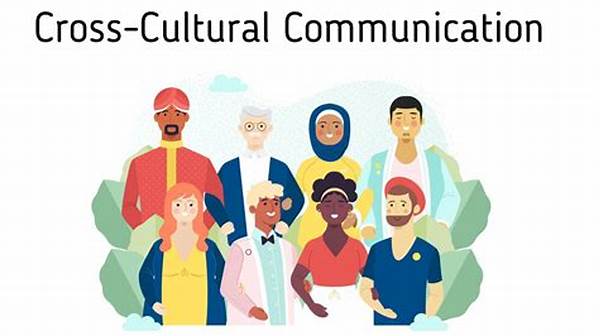In an increasingly globalized world, interactions among individuals from diverse cultural backgrounds have become commonplace. However, such interactions often lead to misunderstandings and disputes arising from differing cultural norms and communication styles. The phenomenon of cross-cultural communication in conflicts refers to the challenges faced during these interactions and the potential impact on conflict resolution processes. The complexity of resolving conflicts is heightened when parties involved possess distinct cultural assumptions and communication practices. Recognizing and addressing these challenges is crucial to fostering effective communication and ensuring peaceful coexistence in multicultural settings. By understanding the nuances of cross-cultural communication, individuals can develop strategies to mitigate conflicts and build harmonious relationships across cultural divides.
Importance of Understanding Cultural Nuances
Recognizing the intricacies of cross-cultural communication in conflicts is essential for effective conflict resolution. Each culture harbors unique communication styles, values, and assumptions that influence how individuals express themselves and interpret others’ messages. When individuals are unaware of these cultural differences, misinterpretations and misunderstandings are bound to occur, potentially escalating conflicts. Developing cultural awareness and sensitivity enables individuals to navigate these differences adeptly, allowing for clearer communication and mutual understanding. By valuing diverse perspectives, parties can move towards resolving conflicts in a manner that acknowledges and respects cultural differences, ultimately leading to more sustainable and peaceful outcomes.
Strategies for Navigating Cross-Cultural Conflicts
1. Active Listening: Engaging in active listening is crucial in cross-cultural communication in conflicts, as it helps individuals understand and appreciate differing perspectives.
2. Empathy: Exhibiting empathy allows individuals to perceive and respect others’ cultural experiences and viewpoints, facilitating smoother communication.
3. Flexibility: Adapting communication strategies to align with varying cultural norms can bridge gaps and foster mutual understanding.
4. Cultural Education: Acquiring knowledge about different cultures enhances individuals’ ability to communicate effectively and resolve conflicts.
5. Mediation Techniques: Using culturally aware mediation methods can ease tension and promote dialogue in cross-cultural disputes.
Challenges in Cross-Cultural Communication
Cross-cultural communication in conflicts poses distinct challenges that need careful consideration. Language barriers are often the most overt obstacle, as words and phrases can carry different meanings and implications across cultures. Additionally, nonverbal communication, including gestures, facial expressions, and personal space, varies significantly among cultures and may lead to misinterpretations. Different cultures also prioritize various communication styles; some may lean towards direct communication, while others value indirect communication. These style variations can cause friction and misunderstanding. Furthermore, deeply ingrained cultural stereotypes and biases can cloud judgment, making it difficult to perceive others’ intentions objectively. Recognizing and addressing these challenges is vital for positive intercultural interactions and conflict resolution.
Efficacy of Cross-Cultural Training Programs
Cross-cultural communication in conflicts can be effectively managed through targeted cross-cultural training programs. These programs are designed to equip individuals with the skills necessary to navigate cultural differences during conflicts. Through comprehensive training, participants gain insights into cultural norms, communication styles, and potential cultural barriers. This knowledge empowers them to adapt their communication approaches appropriately. Moreover, cross-cultural training programs often incorporate experiential learning methods, enhancing participants’ ability to apply theoretical concepts in real-world scenarios. By fostering an understanding and appreciation of cultural diversity, these programs contribute significantly to reducing cross-cultural misunderstandings and optimizing conflict resolution processes.
Role of Technology in Cross-Cultural Communication
In today’s digital age, technology plays a pivotal role in shaping cross-cultural communication in conflicts. Online platforms facilitate interaction among individuals from diverse cultural backgrounds, providing opportunities for cultural exchange. However, technology can also exacerbate misunderstandings due to miscommunications or cultural misinterpretations in virtual interactions. The lack of face-to-face interaction and reliance on text-based communication might result in the absence of crucial nonverbal cues, hindering effective communication. Thus, while technology holds the promise of bridging cultural divides, it also necessitates a mindful approach to ensure clear and respectful communication. Properly integrating technology in fostering cross-cultural communication necessitates an understanding of its potential benefits and limitations.
Importance of Mediation in Cross-Cultural Disputes
Mediation holds significant importance in cross-cultural communication in conflicts as it provides a structured framework for conflict resolution. In cross-cultural settings, mediators often play a crucial role in bridging cultural gaps and facilitating dialogue. Skilled mediators possess an understanding of cultural nuances and employ culturally sensitive strategies to ensure all parties feel heard and understood. By fostering an environment of openness and respect, mediation helps uncover underlying issues, promote compromise, and guide conflicting parties towards mutually acceptable solutions. Ultimately, effective mediation acknowledges cultural differences while striving to reconcile conflicting interests and views, contributing to harmonious resolutions in multicultural contexts.
Summary
Cross-cultural communication in conflicts represents a multifaceted challenge in our interconnected world. Understanding cultural nuances is crucial for effective interaction and conflict resolution across diverse cultural boundaries. Awareness of potential barriers, such as language differences and contrasting communication styles, is essential in preventing misunderstandings. Practicing active listening, empathy, and cultural flexibility are foundational strategies in fostering successful cross-cultural communication. Moreover, targeted training programs play an instrumental role in disseminating knowledge about diverse cultural norms and practices. As technology becomes increasingly integral in communication, its potential to either aid or hinder cross-cultural understanding must be recognized. Ultimately, mediation offers a structured approach to resolving conflicts through cultural sensitivity and respect. By embracing these strategies, individuals can engage in meaningful dialogue and achieve sustainable resolutions to conflicts arising from cultural diversity.





